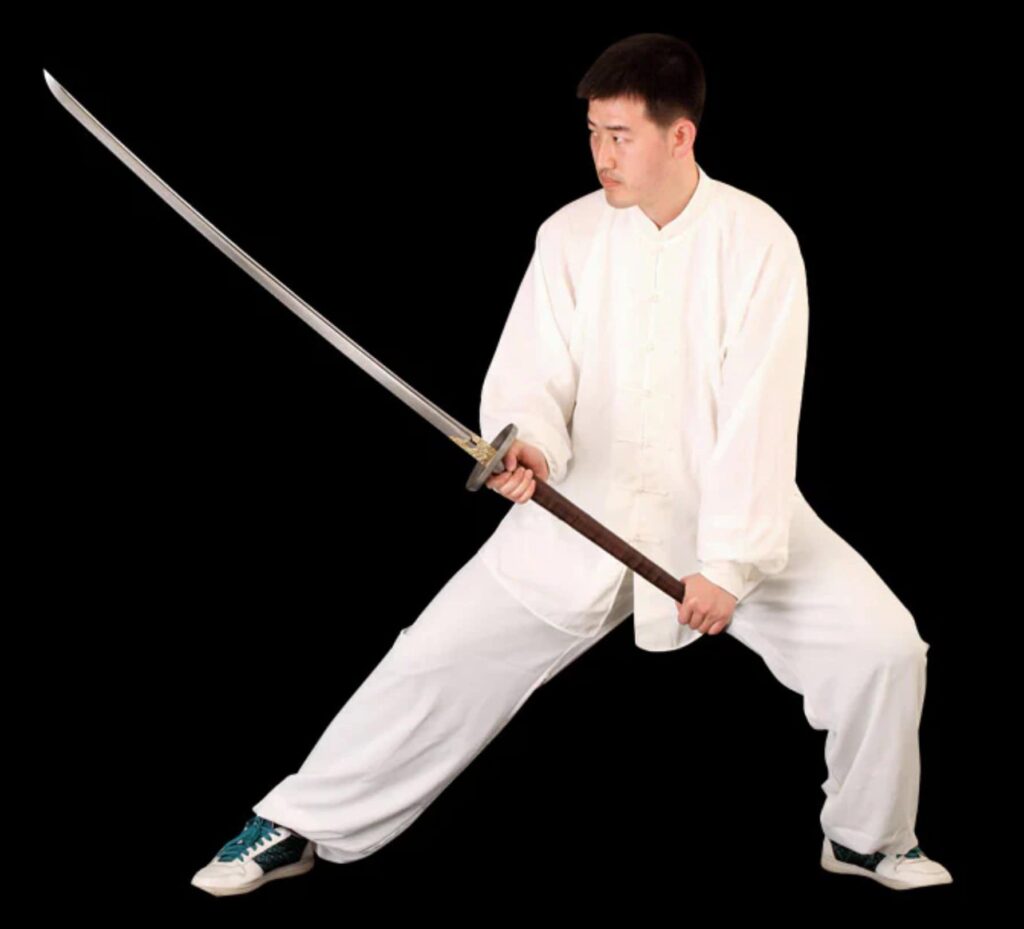What is the Chinese Two-Handed Sword?
TLDR: Chinese two-handed swords, like the Shuangshou Jian and Miao Dao, showcase unique designs and features, blending craftsmanship with martial efficiency.
Man, when I first laid eyes on a Chinese two-handed sword, I was blown away! These bad boys aren’t just your average blades – they’re like the heavyweight champions of the sword world. From the sleek Shuangshou Jian to the curved Miao Dao, these swords pack a serious punch in both looks and function.
Types of Chinese Two-Handed Swords
When it comes to Chinese two-handed swords, two types stand out: the Shuangshou Jian and the Miao Dao. Each of these weapons has its unique characteristics and applications in Chinese martial arts and warfare.
The Shuangshou Jian, or Chinese Two-Handed Straight Sword, is a formidable weapon characterized by its double-edged blade. This sword is significantly longer and heavier than its one-handed counterpart, the Jian. Historically, Shuangshou Jian could reach lengths of up to 1.6 meters (65 inches), making it an imposing sight on the battlefield. The two-handed grip of this sword allows for powerful strikes and provides the wielder with the ability to use the handle as a lever to lock an opponent’s arm if necessary.
One fascinating aspect of the Shuangshou Jian is its large ring pommel, which is a prevalent feature in its construction. This design element not only aids in balance but also allows for some interesting techniques in combat.
In contrast, the Miao Dao, or Chinese Two-Handed Saber, features a single-edged blade. This weapon combines the weight and reach of a spear with the cutting power of a saber, making it exceptionally versatile in battlefield engagements. The Miao Dao’s blade is typically thinner and less decorated than other swords, emphasizing functionality over form.
A unique feature of the Miao Dao is its slightly curved handle, which enhances cutting efficiency. This design allows for powerful, sweeping motions that are effective against multiple opponents. The sword’s name, which translates to “sprout saber,” is derived from its long, slender blade that resembles a young plant shoot.
To illustrate the differences between these two Chinese two-handed swords, consider the following comparison:
| Feature | Shuangshou Jian | Miao Dao |
| Blade Edge | Double-edged | Single-edged |
| Blade Shape | Straight | Slightly curved |
| Primary Use | Slashing and thrusting | Sweeping cuts |
| Handle | Straight | Slightly curved |
| Historical Period | Various dynasties | Ming Dynasty onwards |
Physical Characteristics of Chinese Two-Handed Swords
The physical characteristics of Chinese two-handed swords show off their versatility and effectiveness in combat. These weapons were designed with careful consideration of balance, reach, and striking power, resulting in a range of blade designs and hilt components that catered to different fighting styles and preferences.
When examining the blade design of Chinese two-handed swords, we find a remarkable variety in length and weight. These swords typically measure between 27.5 to 70 inches (70 to 180 cm) in length, with weights ranging from 1.5 to 4.8 lbs (700 g to 2.2 kg). This wide range allowed for swords tailored to different combat scenarios and individual warrior physiques. The edge types of these blades fall into two main categories: single-edged (Dao) and double-edged (Jian). The single-edged Dao excels in powerful slashing attacks, while the double-edged Jian offers versatility in both thrusting and cutting techniques.
The hilt components of Chinese two-handed swords are equally diverse and functional. Guards come in various designs, including crescent, round, and diamond-shaped, each offering different levels of hand protection and aesthetic appeal. The handles are crafted to accommodate a two-handed grip, either straight or slightly curved to enhance control and power transmission. Pommels serve both functional and decorative purposes, with options including rings, metal caps, or tassel attachments.
To illustrate the diversity in Chinese two-handed sword designs, consider the following table comparing two popular variants:
| Feature | Chang Dao | Zhanmadao |
| Blade Length | 36-48 inches | 55-65 inches |
| Weight | 2-3 lbs | 3.5-4.5 lbs |
| Edge Type | Single-edged | Single-edged |
| Guard Design | Crescent | Round |
| Handle | Slightly curved | Straight |
| Pommel | Metal cap | Ring |
One aspect of Chinese two-handed swords that particularly intrigues me is the relationship between blade geometry and cutting performance. The subtle differences in blade curvature, thickness, and taper can significantly impact a sword’s effectiveness in various combat scenarios.
Final Thoughts
After exploring the rich history of Chinese two-handed swords, I have to say, I’m more fascinated than ever. The way these swords seamlessly blend artistry and practicality is absolutely stunning. Even though I probably would never wield one myself, I can’t help but be captivated by their elegance and craftsmanship. If you’re curious about the different types of Chinese swords and their unique characteristics, there’s so much to discover about these legendary weapons.


